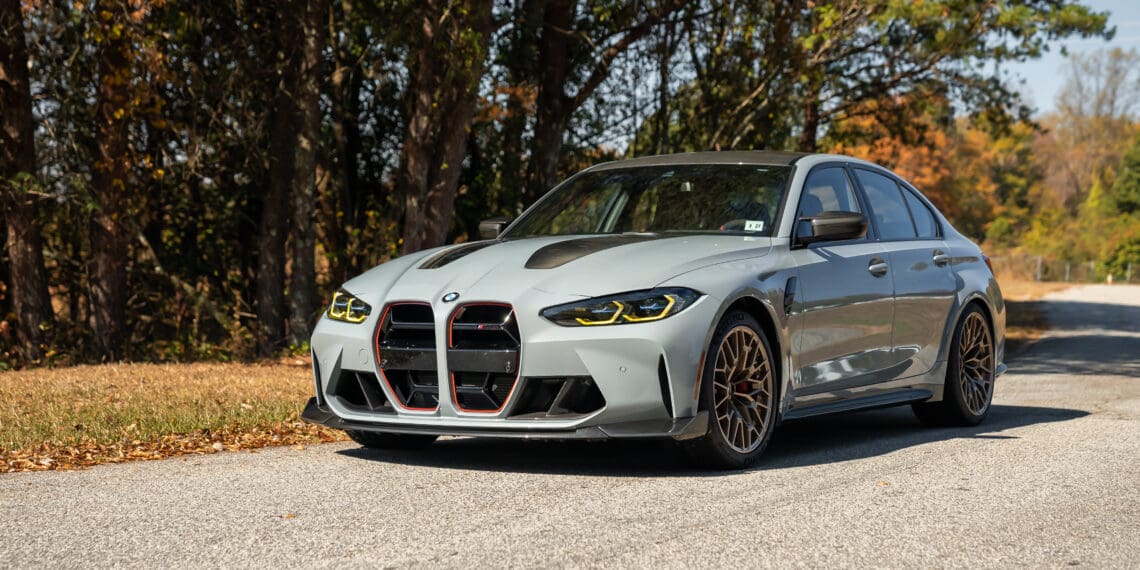The allure of driving a thoroughbred racer on the street is practically irresistible to us enthusiasts. The latest Porsche 911 GT3 RS, with its steering-wheel-mounted dials, allowing on-the-fly rebound and compression adjustments, is only one of a growing list of cars that become significantly more track-focused with each new generation. Yet, while you’ll need a proper circuit to experience the improved pace of these hardened machines, their on-road compromises stand out even on the shortest cruise.
But therein lies the point: we enthusiasts will put up with a harsh ride, back-breaking seats, and even significantly compromised usability to drive something that makes us special, even if we have no intention to explore its heightened abilities fully. On the other end, carmakers are happy to fulfill these customer requests for ever quicker and rawer rides because, as lengthy waitlists of the last few years have shown, demand for these machines far outweighs supply. The thing is, we don’t necessarily have to.
As these special editions become more compromised, a sweet spot opens for a slightly softened model to slot in beneath them. Within BMW’s lineup, it’s the 2024 BMW M3 CS that occupies this space, a car that’s as quick and capable as the M4 CSL in the real world but gains the added practicality of four doors, a well-isolated cabin and a slightly cushioned suspension. With its impressive back road agility and tremendous outright speed, the CS pushes the already athletic M3 forward without sacrificing the versatility that’s core to this sporting sedan’s appeal.
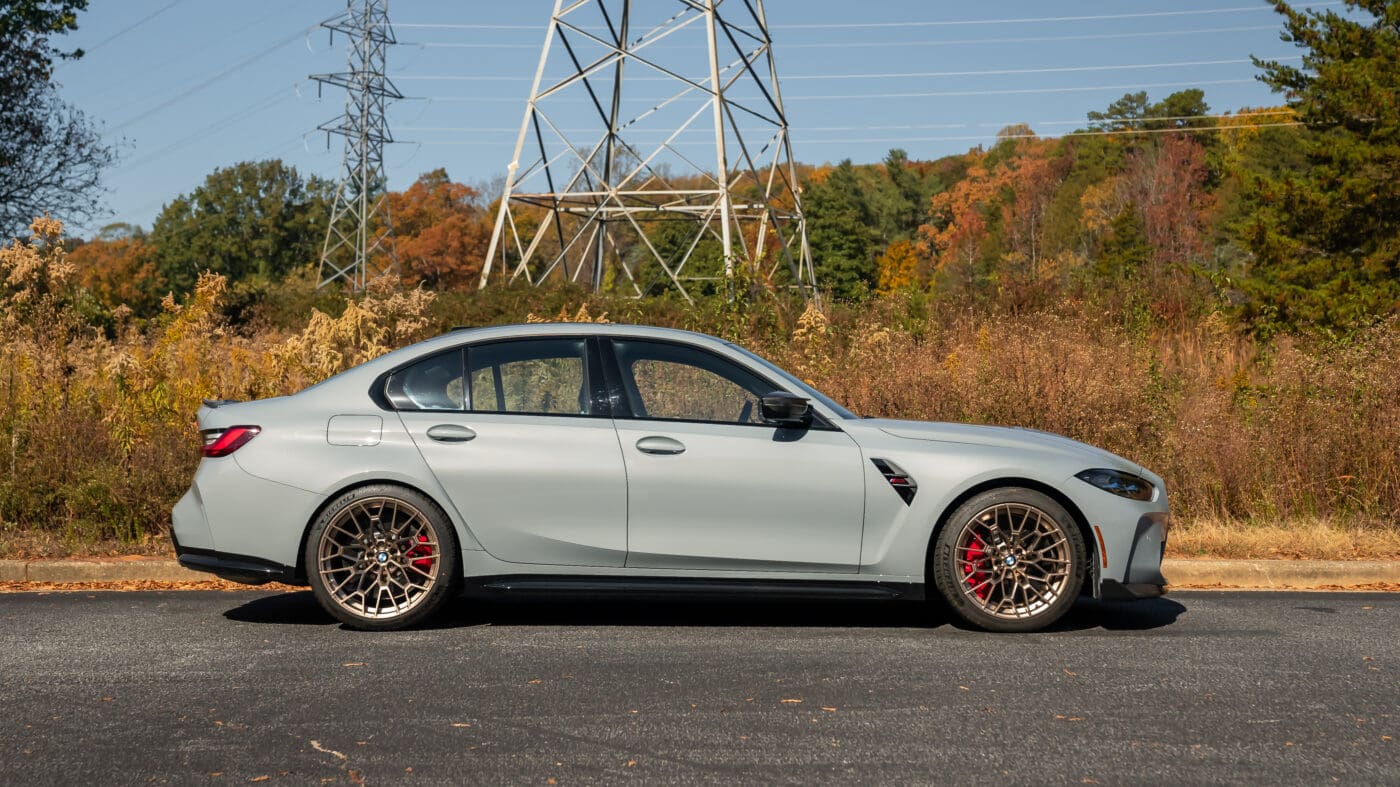
It’s been almost a year since I last drove the lightened and hardened BMW M4 CSL, a car that’ll go down as one of the most exciting the Bavarian-based carmaker has produced in the last two decades. Thanks to a massive 240-lb weight reduction over a standard M4 Competition, the CSL delivers speed and agility a car its size shouldn’t be able to. But, as with most track-day specials, this added athleticism comes at a cost. Reduced sound deadening makes its cabin noisy, its firmed-up suspension crashes over bumps, and its fixed-back ultra-stiff carbon bucket seats require a separate adjustment tool to raise and lower. Simply put, this special edition model, of which just 1,000 exist, is for special occasions only.
The 2024 M3 CS, on the other hand, takes a slightly different approach. Like its two-door sibling, it relies on lightweight Carbon-Fiber Reinforced Plastic panels to cut back the pounds. Its roof, hood, front splitter, front air intake, mirror caps, rear diffuser, and trunk-lid spoiler feature the lightweight material. These combine with a CFRP center console, paddle shifters, and electronically adjustable bucket seats, adding to a total weight savings of a more conservative 75 pounds over a standard M3 Competition xDrive. Optional carbon-ceramic brakes further reduce weight while a set of M compound disks come standard. Despite these reduction efforts, BMW crucially left its sound deadening intact, forgoing significant savings to retain daily usability.
The same can be said of its re-tuned dampers. While its shocks are noticeably firmer than the standard model’s, they’re not stiff to the point of causing you to bounce around in your seat. They’re still decently compliant. Its variable steering ratio is now even quicker than standard in the most aggressive Track mode, while a more robust set of strut tower braces improves its overall rigidity. The big story here, however, is not how different the CS is from a Comp car on paper but how these tweaks improve an already fantastic driving experience.
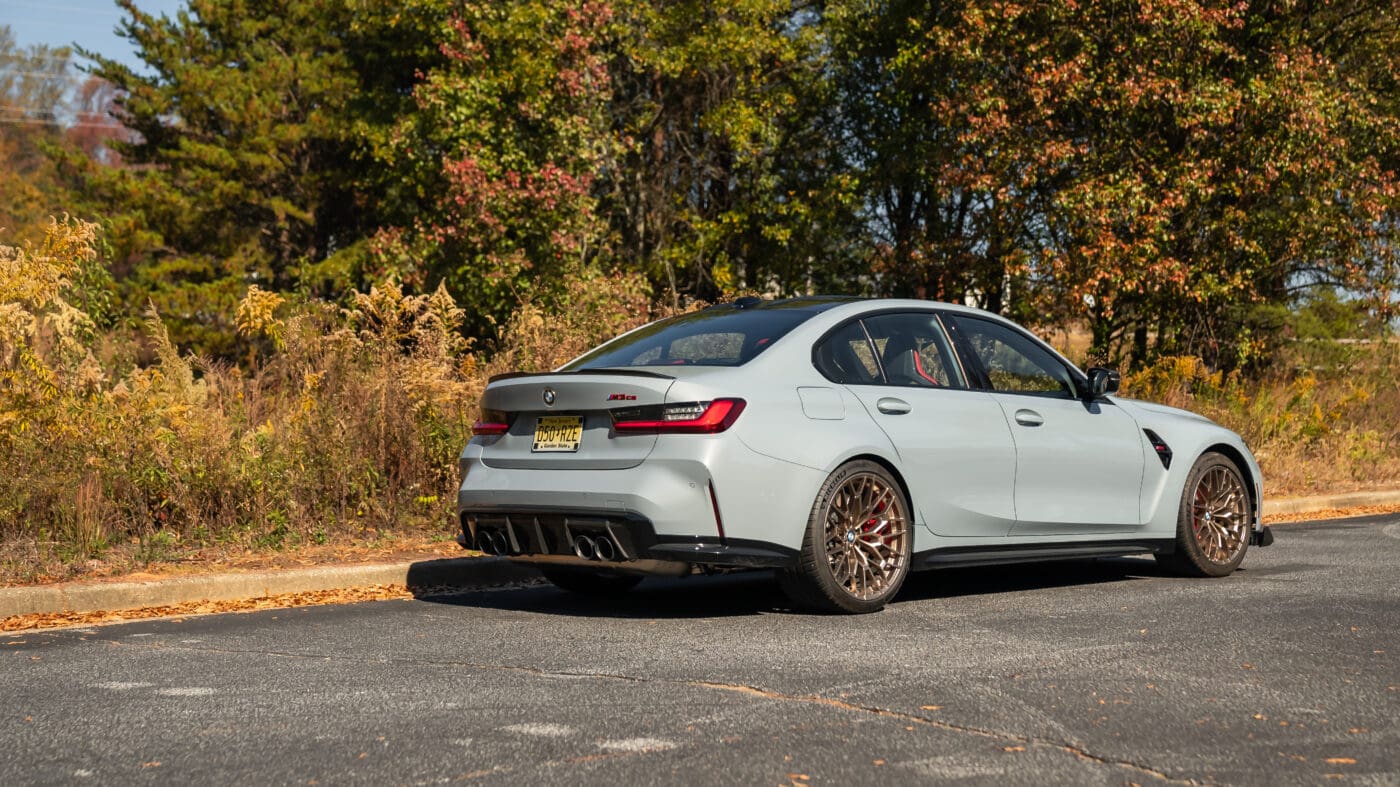
The standard M3 Competition xDrive is no slouch. It’s a proper rocket in a straight line and a willing dance partner in the bends, but it takes only minutes in the CS to feel the difference between the two. A press of its red start button sends its titanium rear muffler singing a tune reminiscent of the CSL’s. It’s sonorous and raspy at the low end with plenty of crackles but becomes more unified and smooth as you approach this M3’s 7,200 rpm redline. And while it may count on the same twin-turbocharged 3.0-liter straight-six as the standard car, it sounds noticeably uncorked, in keeping with the car’s overall elevated aggressiveness.
Power grows to 543 horsepower and 479 pound-feet of torque, a significant 40-HP increase over the standard model, largely thanks to increased boost pressure. A forged lightweight crankshaft, a 3D printed engine block with optimized cooling ducts, and an upgraded oil supply system combine with the multitude of coolers nestled within its front end to allow the CS to be faster and more consistent during back-to-back full-speed blasts.
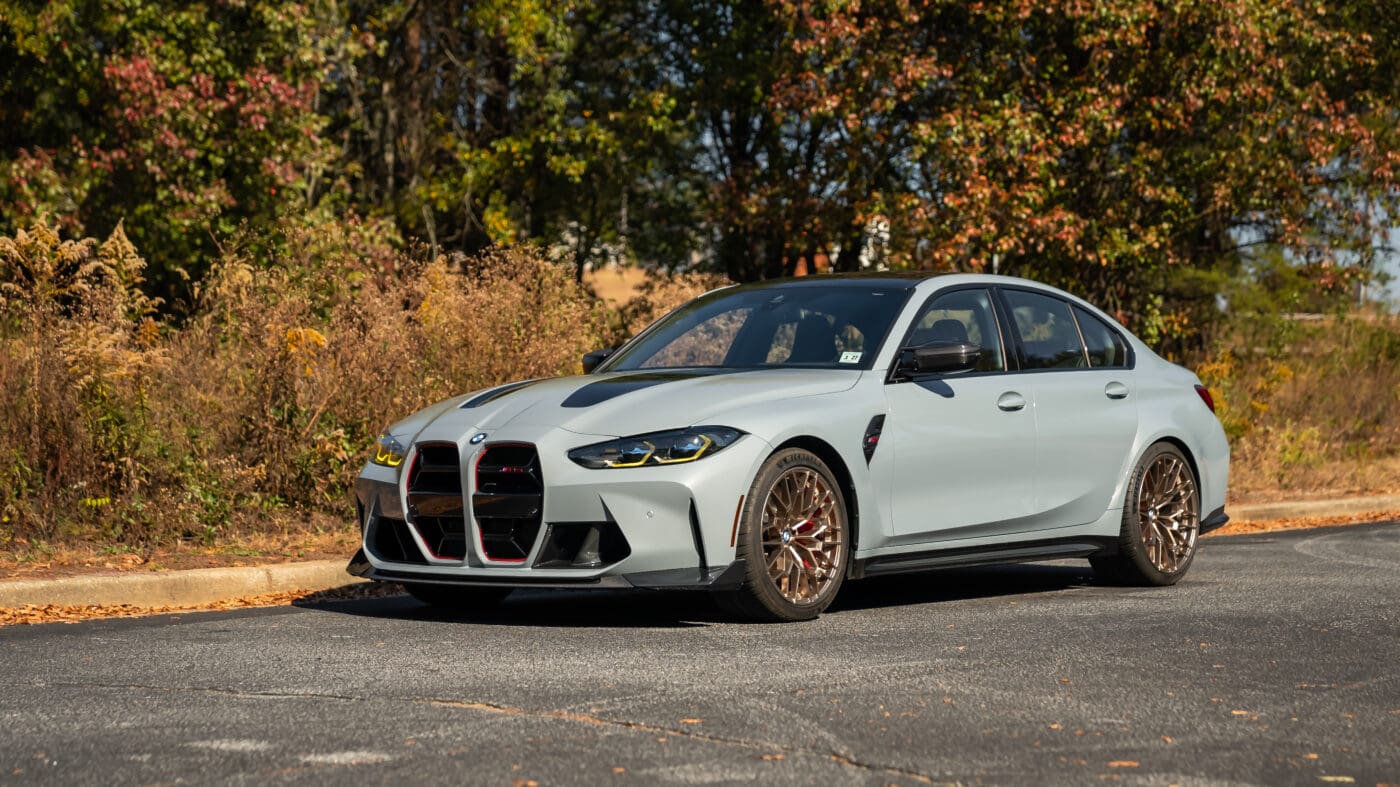
This added grunt goes to all four wheels via a re-tuned ZF eight-speed automatic transmission, which, thanks to quicker shifts, allows for a claimed 0-60 time of 3.2 seconds. However, the CS feels quicker than these stats suggest in the real world. I wouldn’t be surprised to see this sedan pulling off runs closer to the three-second mark. Flat out, it tops out at an electronically limited 188 mph top speed thanks to its standard M Driver’s package. The German carmaker also reworked its xDrive system better to distribute power between the front and rear wheels.
These improved components in this fine state of tune create what I can only describe as a back-road monster. The M3 CS is what I’d always hoped the standard G80 M3 Competition would feel like. Its straight-line speed is a given, but its front-end agility and overall stability are surprising. Thanks to its precise steering, the CS goes precisely where you point it with little fuss from its front tires. It’s the kind of car you can attack a corner going 15 MPH too quickly, and be confident you’ll come out okay on the other side. Wherever your limits are, the CS’ are higher still.
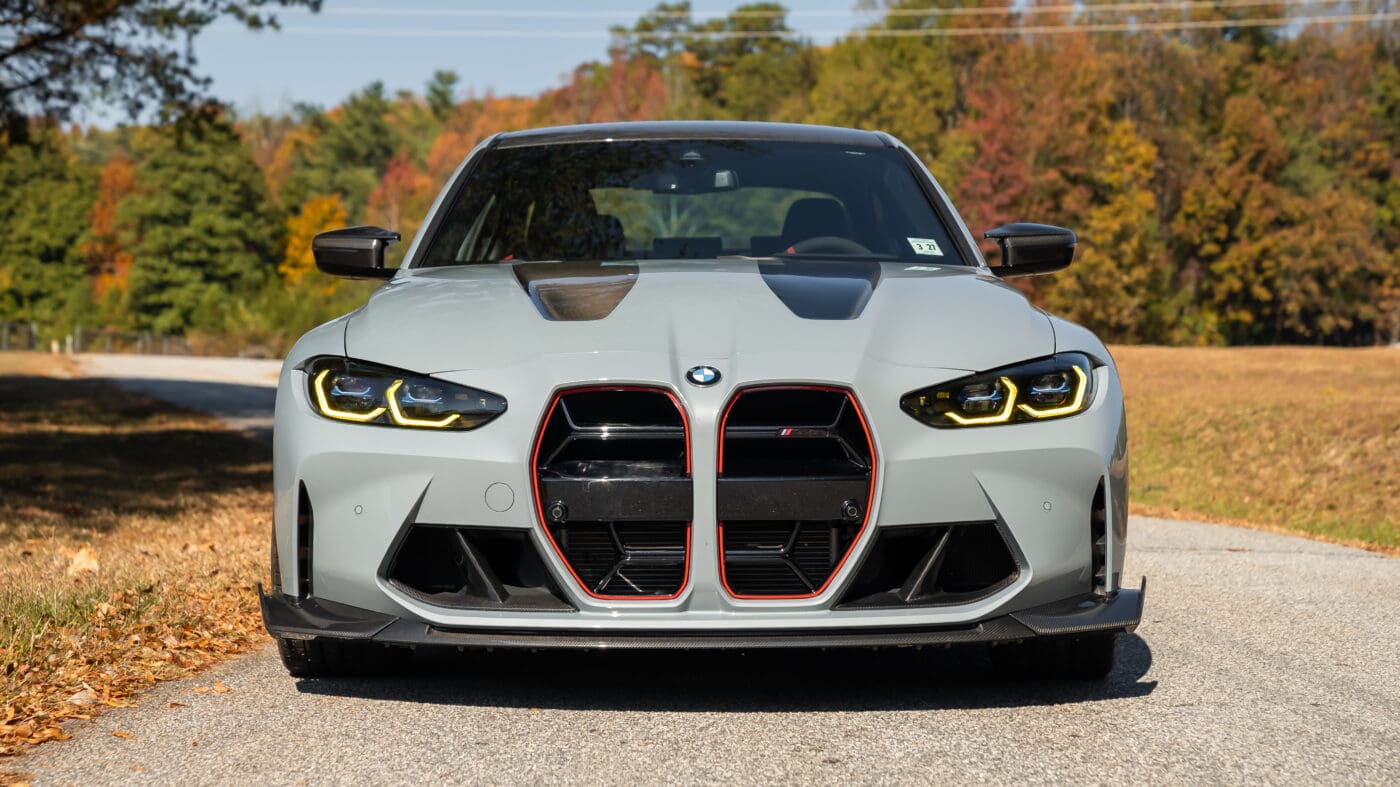
This range-topping M3 reacts to inputs precisely how you’d expect it to, allowing you to feel very connected to what is otherwise a quite sizable and hefty luxury sedan equipped with a high-strung engine. Yet despite its large footprint, the CS links corners with near-perfect balance. It’s a car that wants to tackle bends as quickly as possible, a car that only becomes unsettled when provoked. Yet, thanks to standard systems like M Drive Professional and M Traction Control, you can progressively dial back its safety systems without the car immediately becoming a handful. Despite its tremendous speed and agility, it’s a car you can trust to react predictably as you begin to push.
This confidence grows in part thanks to the substantial amount of road feedback. From its stiffened chassis to its steering and brakes, the CS constantly talks to you about what’s happening beneath its tires. While its Alcantara-trimmed wheel doesn’t weigh up as much as I’d like, there’s plenty of on-center feel as the M3 makes even the slightest road imperfections known. It’s to the point where there’s almost too much communication, but that’s precisely what an all-out M-car should do: keep its driver constantly involved. It never allows you to sit back and check out.

This brings us to the elephant in the room: the BMW M3 CS’ styling. In building this range-topping variant, the Bavarian brand gave this sedan an exposed carbon hood, M4 GT3-derived front grilles and lower intakes, yellow motorsport-style daytime running lights, and a bright set of staggard gold wheels as standard. Set its controversial nose aside, the CS is a wide and low sedan with a genuinely imposing stance. It looks as special as its black and red badges suggest. From a rear three-quarter view, it’s damn near perfect. Move up to the front, however, and that feeling changes. While I know its many openings are necessary to feed cool air into its radiator, intercooler, transmission oil cooler, and engine oil cooler hiding behind its kidney grilles, this styling choice has yet to grow on me a few years on.
Given its $119,695 starting price, including a $995 destination charge, it won’t be surprising to learn that the M3 CS doesn’t offer many optional extras. It essentially comes fully loaded. BMW offers two standard exterior colors: Brooklyn Grey Metallic, like my tester, and Black Sapphire Metallic—the remaining Frozen Solid White and Individual Signal Green cost extra. From there, you can pick between the standard M compound brakes, the optional carbon ceramic set, and high-performance or ultra-high-performance summer tires.
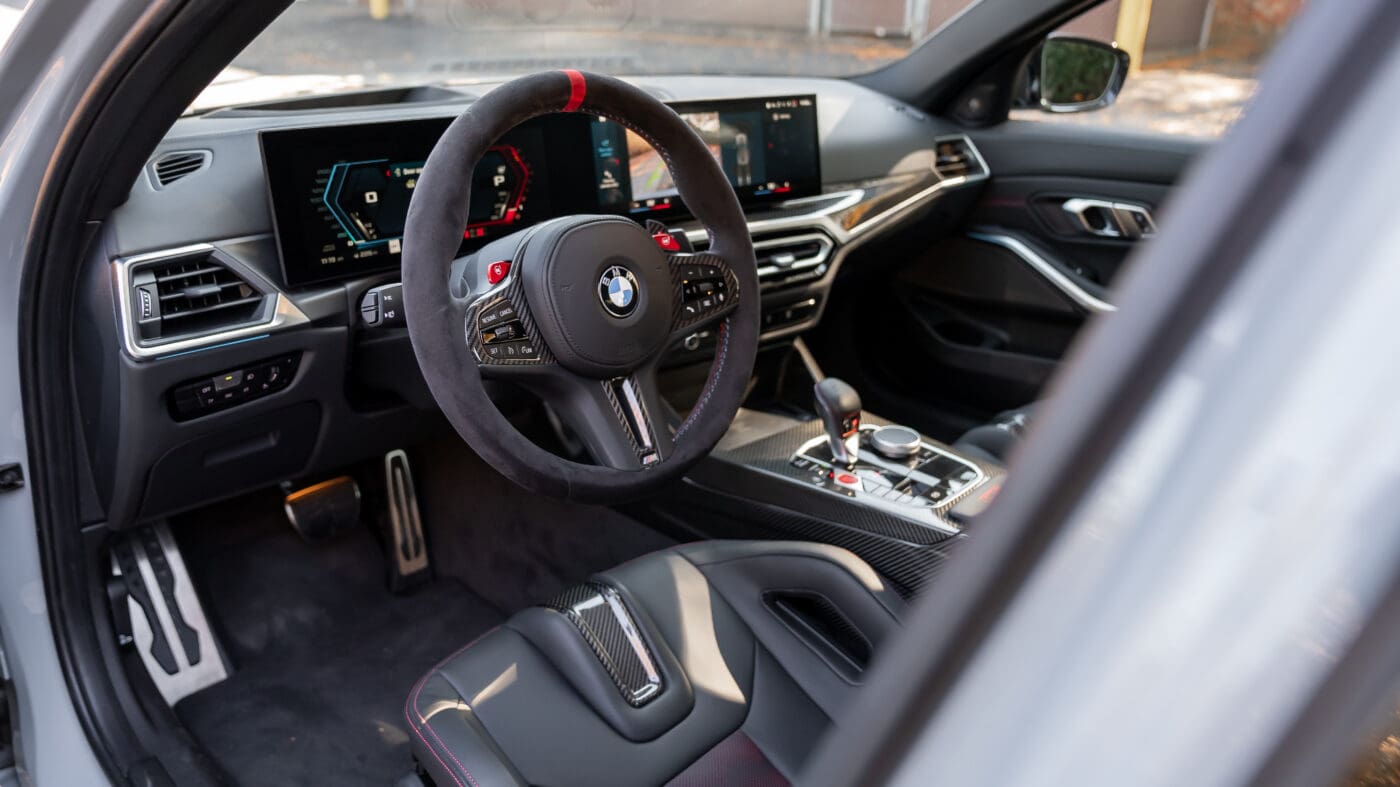
Inside, the story is much the same. The CS comes standard with black Marino leather with red Mugello accents scattered throughout the cabin. BMW wraps its carbon-trimmed steering wheel with Alcantara, while its CFRP center console constantly reminds you that you’ve shelled out the extra $34,000 that the CS commands. Its adjustable carbon bucket seats carry over from the standard model, as do its 12.3-inch instrument cluster and 14.9-inch infotainment displays.
While the carmaker only subtly differentiated the CS’ interior, what you don’t hear stands out most. Despite its firmer shocks and stiffer chassis, this track-ready M3 only transmits slightly more road vibrations and noise than a standard M3. Considering what this car can do on an empty, twisty road, a minuscule drop in cabin refinement is an acceptable price to pay.
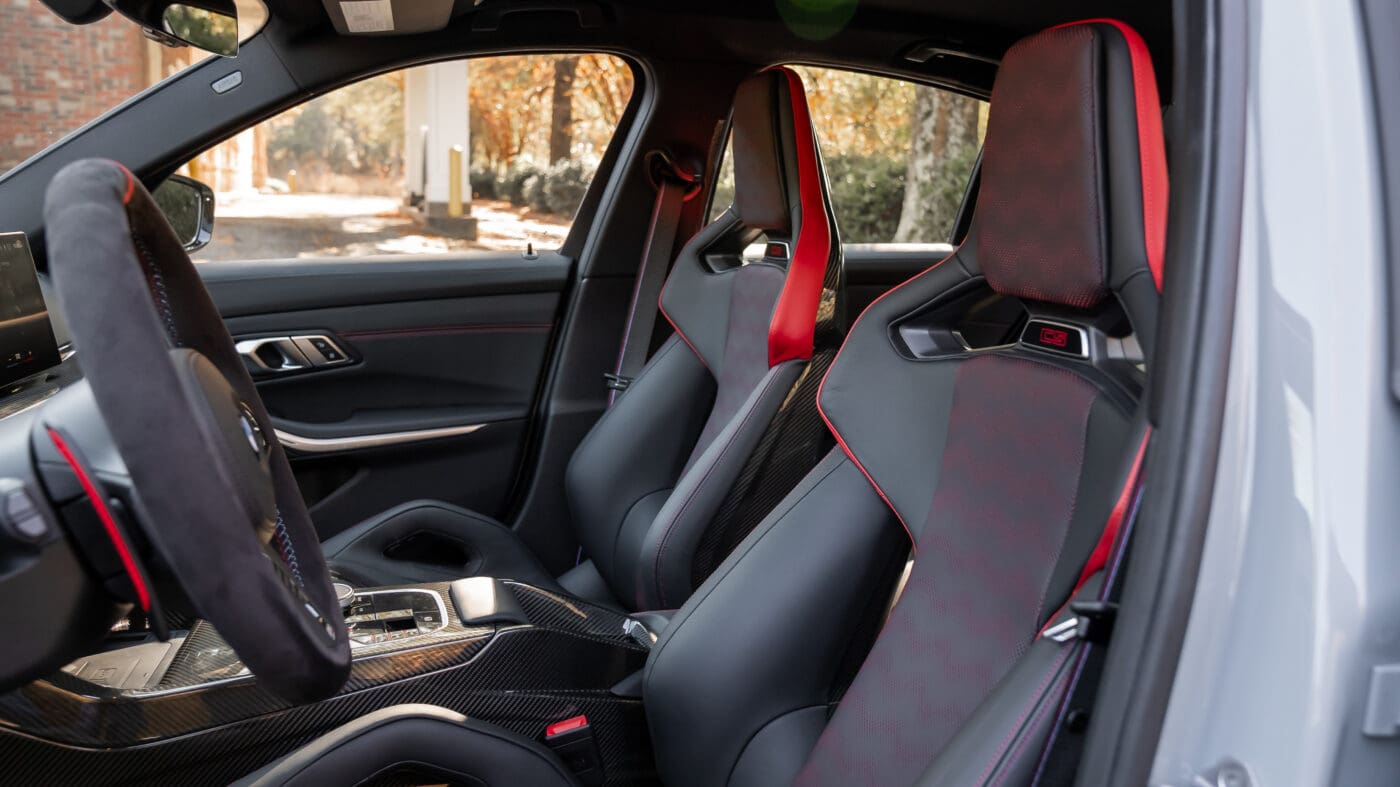
A standard M3 Competition xDrive costs $85,295, including a $995 destination fee. The CS pushes that figure up to the previously mentioned $119,695 price. And while that’s a substantial increase, there are a few things worth considering. For starters, it’s essentially fully loaded, including packages like the M Driver’s pack and M Drive Professional pack, and comfort features like its Harman Kardon sound system, which would already push a standard M3’s price north of six figures. Secondly, the CS still comes in way under the M4 CSL’s $140,895 base figure, and given that it’s just about as capable as its stripped-out sibling in the real world, its pricing becomes more understandable.
How many CS’ BMW plans to build isn’t relatively as easy to understand. The German carmaker has stated it’s a limited model but hasn’t quoted any official production figures thus far. However, if the larger M5 CS is anything to go by, the Bavarian brand will likely only build it for the 2024 model year, and once it’s gone, it’s gone.
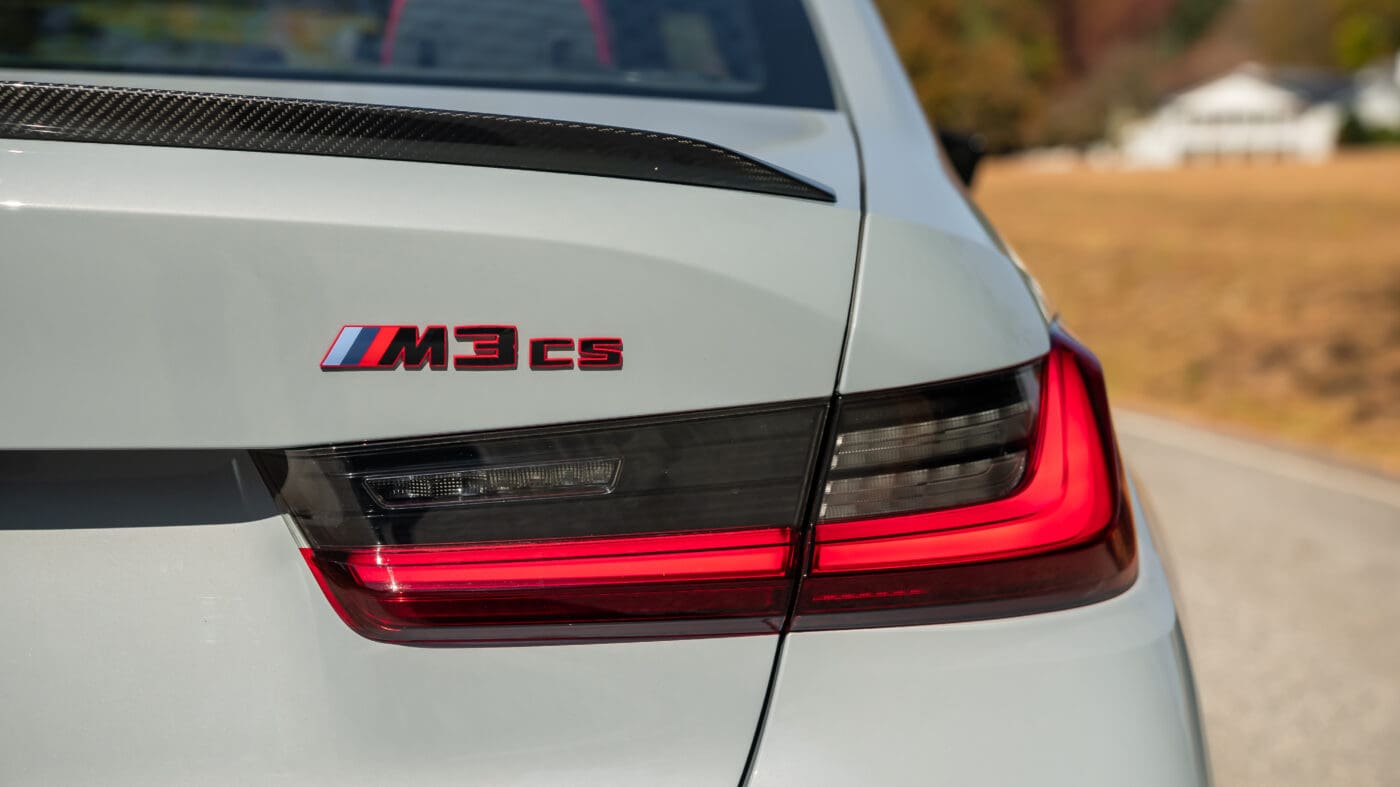
If it isn’t abundantly clear by this point, I’m pretty fond of the 2024 BMW M3 CS. By all accounts, it is the exact kind of sporting sedan the German carmaker should be building. It’s not just fast and impressive but thoroughly thrilling and engaging. A car which, despite only a few minor flaws mentioned above, is almost faultless. This only leaves me wondering why the standard M3 isn’t this good. Stepping up to the CS didn’t require significant hardware changes. Aside from its weight reduction efforts, the most noticeable effects come from its re-tuned components. Yet, despite these adjustments being relatively minor, they create a vastly improved driving experience.
There is no shortage of fast six-figure machines. The market is flooded with them, progressively becoming more hardcore with each subsequent generation. But while these track day specials grab headlines with their outrageous performance stats, they do their owners no good if they’re not enjoyable to drive in the real world. Instead, it’s cars just below this extreme level, cars like the BMW M3 CS that successfully walk a fine line, offering track-ready performance without significant compromises. What good is a racecar if it barely leaves the garage?


